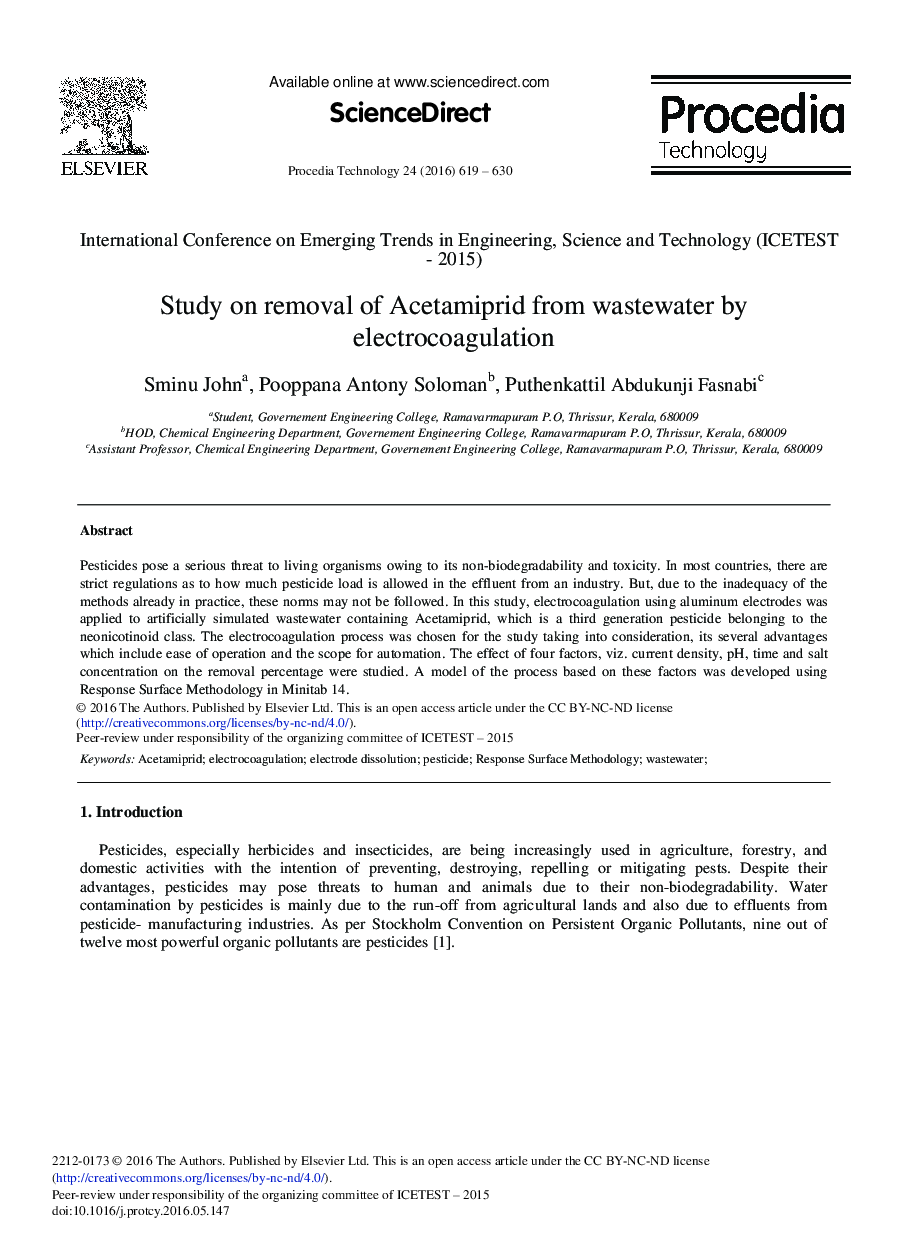| Article ID | Journal | Published Year | Pages | File Type |
|---|---|---|---|---|
| 490704 | Procedia Technology | 2016 | 12 Pages |
Pesticides pose a serious threat to living organisms owing to its non-biodegradability and toxicity. In most countries, there are strict regulations as to how much pesticide load is allowed in the effluent from an industry. But, due to the inadequacy of the methods already in practice, these norms may not be followed. In this study, electrocoagulation using aluminum electrodes was applied to artificially simulated wastewater containing Acetamiprid, which is a third generation pesticide belonging to the neonicotinoid class. The electrocoagulation process was chosen for the study taking into consideration, its several advantages which include ease of operation and the scope for automation. The effect of four factors, viz. current density, pH, time and salt concentration on the removal percentage were studied. A model of the process based on these factors was developed using Response Surface Methodology in Minitab 14.
